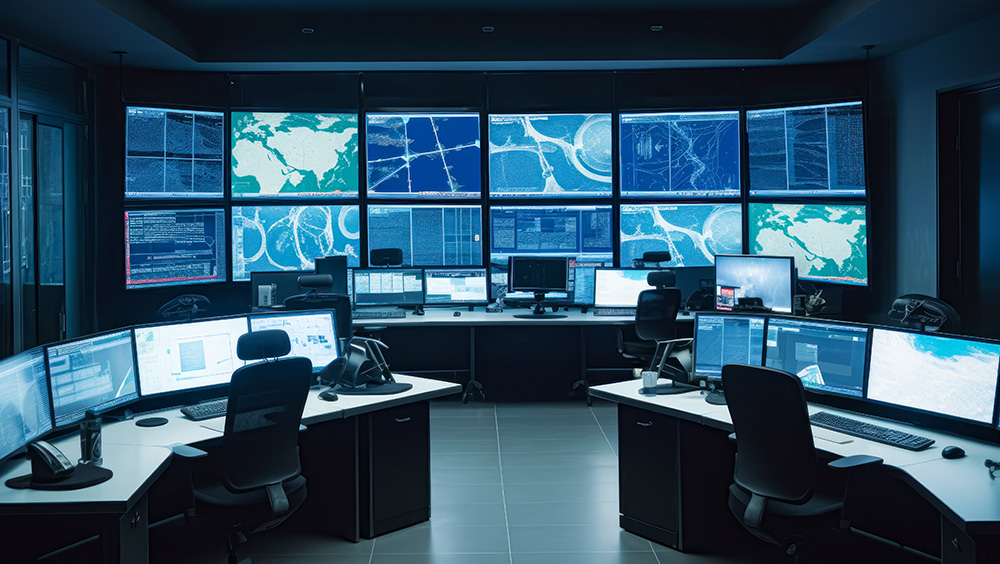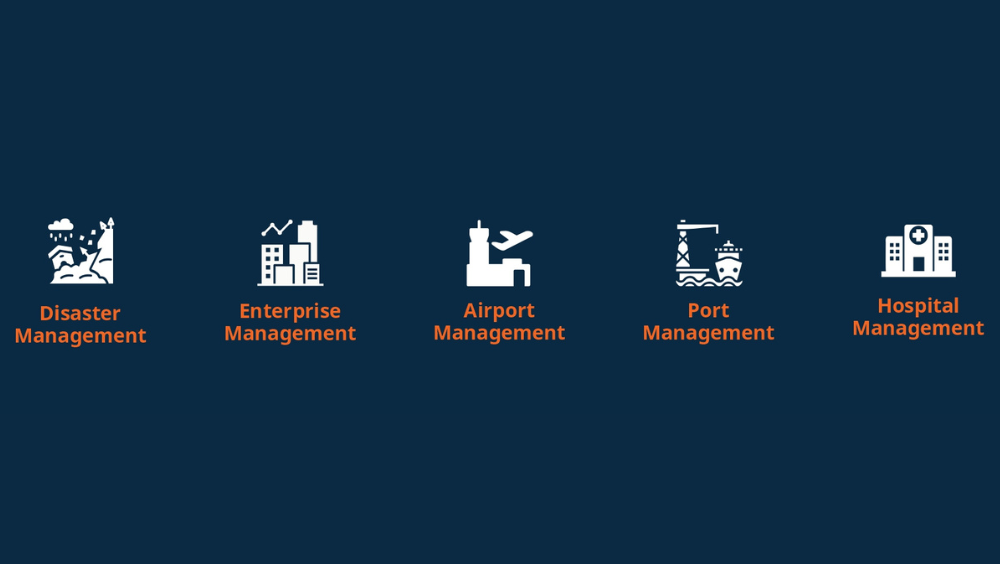India
Breadcrumb navigation
NEC Mi-Command - Integrated Command and Control Centre: Revolutionizing Urban Efficiency and Safety


In the fast-paced world of urban development, cities in India are facing unprecedented challenges in managing their infrastructure and services. The exponential growth in population has resulted in demand and supply gaps across various sectors, including water, waste management, energy, mobility, education, healthcare, and safety. In response to these challenges, NEC India has introduced a ground-breaking solution, NEC Mi-Command – the Integrated Command and Control Centre (ICCC) – designed to be a single, unified platform for city and business operations.
NEC Mi-Command serves as the brain for city operations, exception handling, and disaster management. It enables cities to leverage real-time data for informed decision-making and better situational awareness, allowing them to do more with less.
NEC Mi-Command's versatile capabilities extend beyond urban operations, impacting multiple sectors of society. In the realm of Smart Cities and Townships, it facilitates the efficient management of urban infrastructure and services, ensuring seamless coordination and resource optimization. During disaster management, NEC Mi-Command proves invaluable by facilitating timely responses and enhancing coordination efforts in critical situations. In the landscape, building, and enterprise management sector, the platform aids in monitoring and maintaining assets, improving overall operational efficiency.

Airports benefit from enhanced security measures and operational efficiency, while ports experience streamlined operations and heightened security. In healthcare facilities, NEC Mi-Command contributes to hospital management by streamlining operations and enhancing security protocols. By offering solutions tailored to diverse sectors, NEC Mi-Command emerges as a comprehensive tool that addresses the unique challenges faced by various segments of society, contributing to overall safety, efficiency, and well-being.
Salient Features of NEC Mi-Command
-
Integration with GIS and Maps: The platform allows monitoring devices, incidents, and status on customized GIS maps, providing a visual representation of city operations.
-
Business Rules and SOPs: Users can define their own business rules and standard operating procedures (SOPs) for manual and automatic actions, ensuring efficient and standardized responses to events.
-
Event Actions and Alerts: Various actions, such as SMS, phone calls, emails, sound alarms, and more, are easily accessible to respond promptly to events.
-
Incident Management and Escalation Matrix: It enables efficient management of incidents, defining escalation matrices to ensure timely responses.
-
Intelligent Analytics: The platform detects anomalies across use cases and raises alerts for timely actions, enhancing overall city management.
-
Highly Scalable Module: With a scalable architecture, it can monitor a small-scale enterprise to a large city with thousands of cameras and sensors.
-
Workforce Application: A dedicated application for field officers facilitates real-time notifications, case details, and directions for issue resolution.
-
Citizen Engagement Portal: The Citizen Engagement Portal, integrated with the NEC Mi-Command, empowers residents to access services, raise issues, and stay informed about the city.
NEC Mi-Command Capabilities and Use Cases

-
Alert Management:
Alert Management plays a critical role when dealing with crucial issues. It ensures that responsible or interested parties are promptly informed when an alert is triggered, reducing the time between identifying and responding to critical situations.
Use Cases:
Generating alerts for suspicious activities, such as abandoned objects, intrusion detection, loitering, and fight detection. -
Incident Management:
Incident Management provides a streamlined approach to handling various types of incidents, turning problems into opportunities for improvement. It saves time and money while offering valuable statistical data for future actions and prevention.
Use Cases:
• Locating discrepancies in facilities across multiple vicinities.
• Taking action against illegal incidents like vehicle over speeding.
• Monitoring critical servers, devices, and applications. -
SOP Management:
The Dashboard UI seamlessly controls and allows operators to trigger Standard Operating Procedures (SOPs) based on the type and priority of the alert. It supports complex workflows involving multiple levels of approvals, departmental contacts, and automated escalation paths.
Use Cases:
• Assigning tasks to different users within various departments.
• Displaying alerts/incidents on the Dashboard with location information. -
Device Management:
Device Management is crucial for smart city initiatives, allowing the comprehensive management of connected devices throughout their lifecycle – from discovery and provisioning to decommissioning.
Use Cases:
• Managing connected sensors, lights, and meters to collect and analyse data.
• Providing parking guidance through apps based on sensor data.
• Monitoring water supplies and wastewater systems for leak detection. -
Spatial Tracking:
Geospatial technology is harnessed for creating, managing, analysing, and visualizing spatial data. In smart city management, geospatial data and technology are instrumental for various applications.
Use Cases:
• Enhancing speed, accuracy, and cost-effectiveness in crime prevention.
• Aiding emergency management and disaster recovery efforts.
• Supporting urban planning and environmental initiatives. -
Live Dashboards:
Action-oriented dashboards provide city leadership with aggregated information for day-to-day management or crisis situations. Live dashboards are regularly utilized by officials for efficient decision-making.
Use Case:
• Managing public lighting based on weather or traffic conditions.
• Detecting fires in buildings or open areas using sensors connected to emergency services.
• Overseeing solar panel management and energy input into the distribution grid. -
Live Video Feeds:
Live Video Feed platforms bring together advanced technologies to enhance security provisions and facilitate proactive operational support. They transform operations by generating and analyzing data in real-time.
Use Case:
• Utilizing surveillance cameras for areas with no human surveillance.
• Detecting road congestion through on-board sensors in vehicles, providing information about traffic bottlenecks. -
Analytics & Insights:
Analytics offer the potential for cities to gain valuable insights from a vast amount of data collected through various sources. The integration of sensors, RFID, and Bluetooth enables data analysis for informed decision-making.
Use Cases:
• Discovering trends and requirements through data analysis from IoT devices and sensors.
• Enhancing crime reduction, optimizing smart city lighting, and improving water and electricity systems.
NEC Mi-Command - Use Cases in Various Sectors

- Smart Cities/Townships: Enabling efficient management of urban surveillance solutions and services.
- Disaster Management: Facilitating timely responses and coordination during disasters.
- Landscape/Building/Enterprise Management: Enhancing the monitoring and maintenance of landscapes, buildings, and enterprises.
- Airport Management: Improving security and operational efficiency at airports.
- Port Management: Ensuring efficient operations and security at ports.
- Hospital Management: Streamlining operations and enhancing security in healthcare facilities.
Reasons to Invest in NEC Mi-Command
- End-to-end solution from sensors to applications, dashboards, and analytics.
- Sensor tech and vendor application agnostic, supporting multiple applications.
- Highly customizable, catering to diverse user needs and requirements.
- Open Data and APIs, ensuring interoperability and data accessibility.
- Robust security with multi-departmental role-based access control (RBAC).
- Cost-effective with long-term scalability.
Benefits of NEC Mi-Command
- Alerts to potential risks, providing instant notifications on disruptions and recommended actions.
- Scenario evaluation for trade-offs and options, comparing them against the current plan and critical Key Performance Indicators (KPIs).
- Automation and response, enabling automatic rebalancing of operations in seconds.
- Real-time collaboration, allowing teams to work together and push chosen scenarios live with a single click.
- Decision-making support, capturing decisions and context to improve future system-generated recommendations.
- Predictive intelligence, ensuring agility and confident responses to changes in the supply chain.
Final Thoughts
NEC Mi-Command emerges as a comprehensive solution to the challenges faced by cities in India. By providing real-time data-driven decision-making, efficient incident management, and seamless integration with various applications, it stands as a beacon for smart city development. As cities strive for optimal efficiency and improved living environments, NEC Mi-Command offers the tools and capabilities needed to navigate the complexities of urban operations and business strategies.
Contact